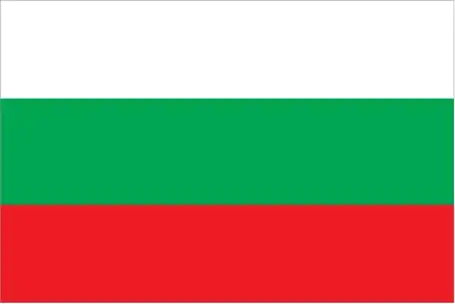Bulgarian Flag
National Flag of Bulgaria
Bulgarian Flag Display

Quick Facts About Bulgaria and Bulgarian Flag
- Adopted:
- Aspect Ratio:
- 3:2
- Capital:
- Sofia
- Population:
- 6.5 million
Flag Description
The Bulgarian Flag consists of three horizontal stripes: white (top), green (middle), and red (bottom). Adopted in 1991, the flag's colors have historical and symbolic meanings: white for peace and freedom, green for the country's agricultural wealth, and red for the courage and valor of the people. The flag's design has roots in the 19th-century struggle for independence from Ottoman rule.
Symbolism & Meaning of the Bulgarian Flag
White for peace, green for agriculture, red for courage.
Historical Background of the Bulgarian Flag
The flag was first used after the Russo-Turkish War (1877–1878) and has undergone minor changes, with the current version adopted after the fall of communism.
Design Elements of the Bulgarian Flag
Three horizontal stripes: white, green, red.
Usage & Protocol of the Bulgarian Flag
The flag is flown on public buildings and during national holidays.
Frequently Asked Questions
What do the colors of the Bulgarian Flag represent?
White for peace, green for agriculture, red for courage.
When was the Bulgarian Flag adopted?
The Bulgaria flag was adopted on 1991, marking an important milestone in the country's development as an independent nation.
What is the aspect ratio of the Bulgarian Flag?
The Bulgaria flag has an aspect ratio of 3:2, which determines the proportional relationship between its width and height for official display purposes.